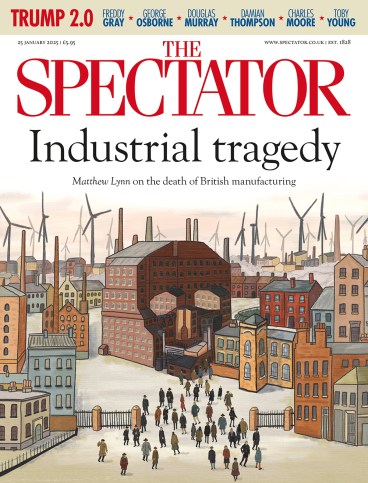
London, June 1877. Beneath a cloudy sky, the celebrated art critic John Ruskin strode along Bond Street towards the newly opened Grosvenor Gallery. Inside, he viewed a smash-hit show of beautiful and progressive art. At least that was the popular opinion. With a few exceptions, Ruskin dismissed the works on display as eccentric, impertinent and indulgent. Worst of all? James Abbott McNeill Whistler’s ‘Nocturne in Black and Gold – The Falling Rocket’, a deliciously wispy painting that captures sparks fizzing and flaring in a dark night sky.
Ruskin fired the first shot; then Whistler sued him for libel, firing straight back
At least that’s how I would describe it. Ruskin’s response was more barbed: ‘I have seen and heard much of cockney impudence before now; but never expected to hear a coxcomb ask 200 guineas for flinging a pot of paint in the public’s face.’ It wasn’t simply that he disliked Whistler’s shimmering picture of fireworks illuminating the smoggy blue-green air above the Thames. It was that, in his eyes, it wasn’t art, nor its maker an artist.
Paul Thomas Murphy’s informative and entertaining book is a double biography of Whistler and Ruskin and a blow-by-blow account of their ‘battle for modern art’. With his scathing review, Ruskin fired the first shot; then Whistler sued him for libel, firing straight back. The court case examined whether or not the critic’s words were fair – and, unofficially, unavoidably, whether the artist’s paintings were good or bad.
For Whistler, an American in London, fiery and flamboyant, living beyond his means, the lawsuit was as much about the 1,000 guineas in damages as it was about clearing his name. For Ruskin, it was, writes Murphy, ‘an opportunity to reach out and educate the public – his public – more widely than ever before’. While Whistler was a passionate exponent of art for art’s sake, Ruskin, the pre-eminent cultural theorist of the Victorian era, believed that art ought to be true to nature, with order, meaning and a moral function. No wonder, then, that he objected to the canvas in question, which, with its blurry backdrop and barely there passersby, steered queasily close to abstraction.
The trial took place over two days in November 1878 and is the centrepiece of Falling Rocket. In the preceding pages Murphy conjures the bubbling-up of anticipation, and the events in the crowded courtroom verge on the cinematic. While Ruskin was too ill to attend (suffering a mental breakdown and sending the Pre-Raphaelite painter Edward Burne-Jones to testify in his place), the plaintiff was in his element, garnering applause with his witty responses. Did he truly think the two days’ labour he spent on his ‘Nocturne’ was worth the 200 guineas he was charging? ‘No,’ he replied, ‘I ask it for the knowledge of a lifetime.’
Of course, the battle for modern art rumbled on long after the verdict was handed down (Whistler won, sort of – the case was decided in his favour, but he received only a farthing in damages). Murphy shares a before-and-after of the two leading men. Early on, we meet the parents who fostered their sons’ talents. John James Ruskin filled the family library with literature. Anna McNeill Whistler took young Jemie to galleries and academies. And, though Whistler abandoned his mother’s God for what he called his ‘whimpering goddess’ (Art), Anna played a key role in her son’s transfiguration. It was his 1871 portrait of her in her black widow’s dress and white cap that freed him from a disheartening series of stop-starts; and it was she who pushed him to produce his hazy moonlit scenes in the summer of the same year.
Among the wider cast of characters are love interests, some less successful than others. Ruskin never recovered after the young Rose La Touche rejected his proposal. Effie Gray accepted him, but he was sexually anxious and refused to consummate the marriage, which was later annulled, freeing her to be with John Everett Millais. Whistler had a habit of making enemies of his friends. His run-in with the wealthy shipowner Frederick Leyland, once his greatest patron, was crucial. Whistler redecorated his dining room obsessively and, in Leyland’s eyes, disastrously (think peacock patterns and metallic leaf), which set him back financially before the trial. The book also includes a lengthy list of critics and artists called as witnesses.
All of which comes together to make for an account that will appeal to aficionados and amateurs alike with its mix of art history and action. As for who really won the battle for modern art, Whistler undoubtedly was, in Murphy’s words, ‘foremost among those who kicked open the door to the modern’. But, while devoted to the Old Masters, Ruskin would turn out to be ahead of his time, too, warning anyone who would listen in 1875 of ‘some terrible change of climate coming upon the world for its sin, like another deluge’.








Comments